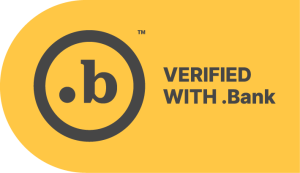As you begin a new year, you get a chance for a fresh start in many aspects of your life. This time is a moment for self-improvement and setting goals. It’s a chance to dream a little bit about what the next 12 months have in store for you.
Everyone has to deal with one carryover from the previous year: filing their tax returns. Yes, the old Benjamin Franklin idiom is true, “nothing is certain except death and taxes.”
While tax filing can seem daunting, an accurate and on-time submission is easier to obtain than you think and can help you receive your return quickly and avoid potential penalties. If this is the first time you are filing a tax return, you may be wondering where you can start. That’s okay! The IRS estimates that there will be 168 million tax returns filed this year, and we’re sure that a few of those will be first-timers like yours.
Let’s walk through some common tax forms, how to file taxes, whether you should use tax filing software or a tax consultant and how your bank is involved.
How Do I File My Taxes for the First Time?
When filing for the first time, you may wonder about the process and if you will have to pay taxes to the government. While we can’t address every tax situation, if you are a salaried employee, your income taxes are automatically withheld by your employer every time you are paid. In this situation, you usually don’t have to worry about paying extra income tax.
If your income taxes are withheld, you might wonder why you need to file a tax return. If you fall under the filing requirements, you need to file a tax return in order to:
- Get your money back. Many employers report your income taxes based on the information you provide on a W-4 form you fill out at the beginning of your employment. Once you file your tax return, the IRS may determine that more has been withheld than you owe, and you can receive a tax refund.
- Avoid interest and penalties. In the inverse, if income taxes were under-withheld, you may owe taxes to the IRS. In this case, you should make sure your tax return and payment are on time to avoid penalties.
- Secure your credit score. If you fail to submit an accurate return or pay owed taxes before the deadline, a lien can be placed against you. A lien is a legal claim on your property when you fail to pay your taxes. A lien can damage your credit score, making it more challenging to secure a low-interest rate on personal or business loans or a mortgage.
What Are the Different Tax Forms?
There are a variety of tax forms that you may receive or need to prepare when filing your tax return. You should receive all necessary tax forms by the end of January. Three common forms you’ll see are:
- Form W-2: The Form W-2 is filed by your employer to show how much of your income was withheld for income, Social Security and Medicare tax.
- Form 1099-INT: A Form 1099-INT is filed by any financial institution or government agency that reports taxable interest. If you make more than $10 in the year, you will receive a Form 1099-INT. You can receive multiple forms from multiple financial institutions. Make sure to check out our article about Form 1099-INTs to learn more about taxable income from interest.
- Form 1040: Form 1040 is a catch-all form for other types of additional income, taxes and credits.
The more complicated your tax situation is, the more forms you may receive or need to prepare. If you are unsure of what kind of forms you need or how complicated your tax situation is, stick with us to learn about digital tax aids and tax consultants.
Filing Taxes 2023: Software Versus In-Person Tax Preparation
The number of tax aid options can be overwhelming. When filing your first tax return, the IRS Free File Program is a great place to start. If you meet the criteria, you may be able to digitally file your taxes for free. However, if you feel more comfortable working with a tax professional, you can visit IRS’s online directory to connect with a tax return preparer.
So, how do you decide which option is better for you? Let’s break down some key differences between software and in-person tax preparation.
The Case for Online Tax Preparation
Can you really prepare your tax return by spending a few minutes on your phone or computer? If you have a simple tax situation, online tax preparation may be the best route for you!
Four Pros of Online Tax Preparation
- Easy to use: Most tax preparation software is designed with an easy-to-use interface. Some software asks you questions much like a professional tax preparer would in a meeting.
- Instant submission: When submitting your return through tax preparation software, it is instantly sent to the IRS, which can result in a faster refund.
- Low cost: Depending on your income, you may be able to file your tax return for free. Even if you need to pay for more robust software, you can find an application for a low cost.
- Potential professional support: If you opt for premium tax preparation software, you may have access to a tax professional if you have any questions about your return.
Four Cons of Online Tax Preparation
- Not ideal for complex tax situations: If you have multiple sources of income, are self-employed or have other factors that affect your tax situation, tax software may not be comprehensive enough to account for each of those items.
- Requires detailed entry: If you decide to utilize software for your tax preparation, you will have to input all of the necessary data.
- Support can be limited: Depending on the type of software you use, you may or may not be able to consult with a tax professional regarding your questions. Many free tax filing applications don’t offer additional support.
- It may not maximize your refund: Many tax applications can walk through a variety of possible credits or refund opportunities with you, but they may not be able to comb through your current tax situation as thoroughly as an in-person tax expert can. Having a tax preparer look through your financial situation and ask essential questions can help you find more ways to get the most from your tax refund.
The Case for Working with a Tax Professional
Is the tried-and-true method of sitting down with a professional the best way to go regarding your 2023 return? While it may seem like an old-fashioned way to file your taxes in the current age of smart tech, there are some serious benefits to filing with a tax pro over software alone.
Three Pros of In-Person Tax Preparation
- In-depth explanation: A professional accountant or tax preparer can give you a more in-depth explanation of your tax situation than a tax filing application can due to their years of experience.
- Higher customer support: You can expect better service when contacting your tax preparer to ask questions and get more info about your return.
- Advanced strategy for your tax future: When planning for your financial future (i.e., retirement, setting up a college fund for your children, etc.), you may want to consult with a tax expert to see how you can best utilize your income.
Cons of In-Person Tax Preparation
- Can make mistakes: While your professional tax preparers will carefully input your information, they are human and can make errors on your return. You need to review your return before it’s filed to ensure its accuracy.
- Can be more expensive: If you have a simple tax return or are eligible for free electronic filing, a professional tax preparer may cost more. The cost will come down to how much time it takes for your tax preparer to file your return. If you are organized and have a relatively simple return, you can expect either method to be low-cost.
- More time-consuming: While professional tax preparers should be prompt in their filing, it may take more time for them to finish your return than tax filing software.
Whether you choose in-person tax filing or tax filing software, it’s essential to look at customer ratings and reviews before making your final choice.
What Is Tax Season, and When Should I File My Taxes?
Tax season is the period of time when you can file your tax return to the IRS. It usually takes place between the middle of January and the middle of April. In 2023, the IRS set January 23rd as the official start to tax filing season and April 18th as the official deadline. If you file for an extension, you can submit your tax return as late as October 16th.
You should take care of your tax return as soon as possible. No matter how you decide to file, the sooner you file, the sooner you will receive your refund. Outside of a quick refund, you want to start the tax filing process to give yourself ample amounts of time to address potential hiccups in the filing process.
Where Does My Bank Come In?
If you earned over $10 of income on an interest-bearing account with your bank, like a savings account or certificate of deposit (CD), you should receive a Form 1099-INT that will give you the taxable amount of income. One of the best ways to ensure a quick refund is to have an account with direct deposit.
Whether you’re looking for ways to make your money work for you or need a place for your tax refund to land, check out the variety of services we offer at Community Point Bank. Not only do we boast a variety of ways to earn, but we also have an excellent team of knowledgeable individuals who can help you maximize your money, including that tax refund.
Visit our contact page today to see how you can get in touch and start banking better.




